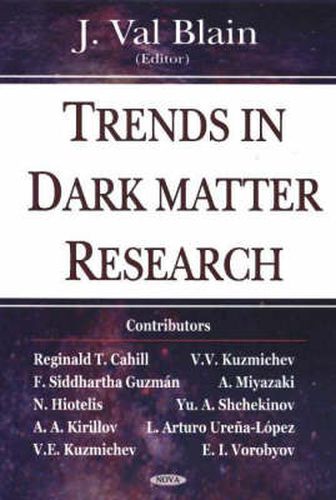Readings Newsletter
Become a Readings Member to make your shopping experience even easier.
Sign in or sign up for free!
You’re not far away from qualifying for FREE standard shipping within Australia
You’ve qualified for FREE standard shipping within Australia
The cart is loading…






It is generally believed that most of the matter in the universe is dark, i.e. cannot be detected from the light which it emits (or fails to emit). Its presence is inferred indirectly from the motions of astronomical objects, specifically stellar, galactic, and galaxy cluster/supercluster observations. It is also required in order to enable gravity to amplify the small fluctuations in the cosmic microwave background enough to form the large-scale structures that we see in the universe today. For each of the stellar, galactic, and galaxy cluster/supercluster observations the basic principle is that if we measure velocities in some region, then there has to be enough mass there for gravity to stop all the objects flying apart. Dark matter has important consequences for the evolution of the universe and the structure within it. According to general relativity, the universe must conform to one of three possible types: open, flat, or closed. The total amount of mass and energy in the universe determines which of the three possibilities applies to the universe. In the case of an open universe, the total mass and energy density (denoted by the Greek letter U) is less than unity. If the universe is closed, U is greater than unity. For the case where U is exactly equal to one the universe is flat . This new book details leading-edge research from around the globe.
$9.00 standard shipping within Australia
FREE standard shipping within Australia for orders over $100.00
Express & International shipping calculated at checkout
It is generally believed that most of the matter in the universe is dark, i.e. cannot be detected from the light which it emits (or fails to emit). Its presence is inferred indirectly from the motions of astronomical objects, specifically stellar, galactic, and galaxy cluster/supercluster observations. It is also required in order to enable gravity to amplify the small fluctuations in the cosmic microwave background enough to form the large-scale structures that we see in the universe today. For each of the stellar, galactic, and galaxy cluster/supercluster observations the basic principle is that if we measure velocities in some region, then there has to be enough mass there for gravity to stop all the objects flying apart. Dark matter has important consequences for the evolution of the universe and the structure within it. According to general relativity, the universe must conform to one of three possible types: open, flat, or closed. The total amount of mass and energy in the universe determines which of the three possibilities applies to the universe. In the case of an open universe, the total mass and energy density (denoted by the Greek letter U) is less than unity. If the universe is closed, U is greater than unity. For the case where U is exactly equal to one the universe is flat . This new book details leading-edge research from around the globe.